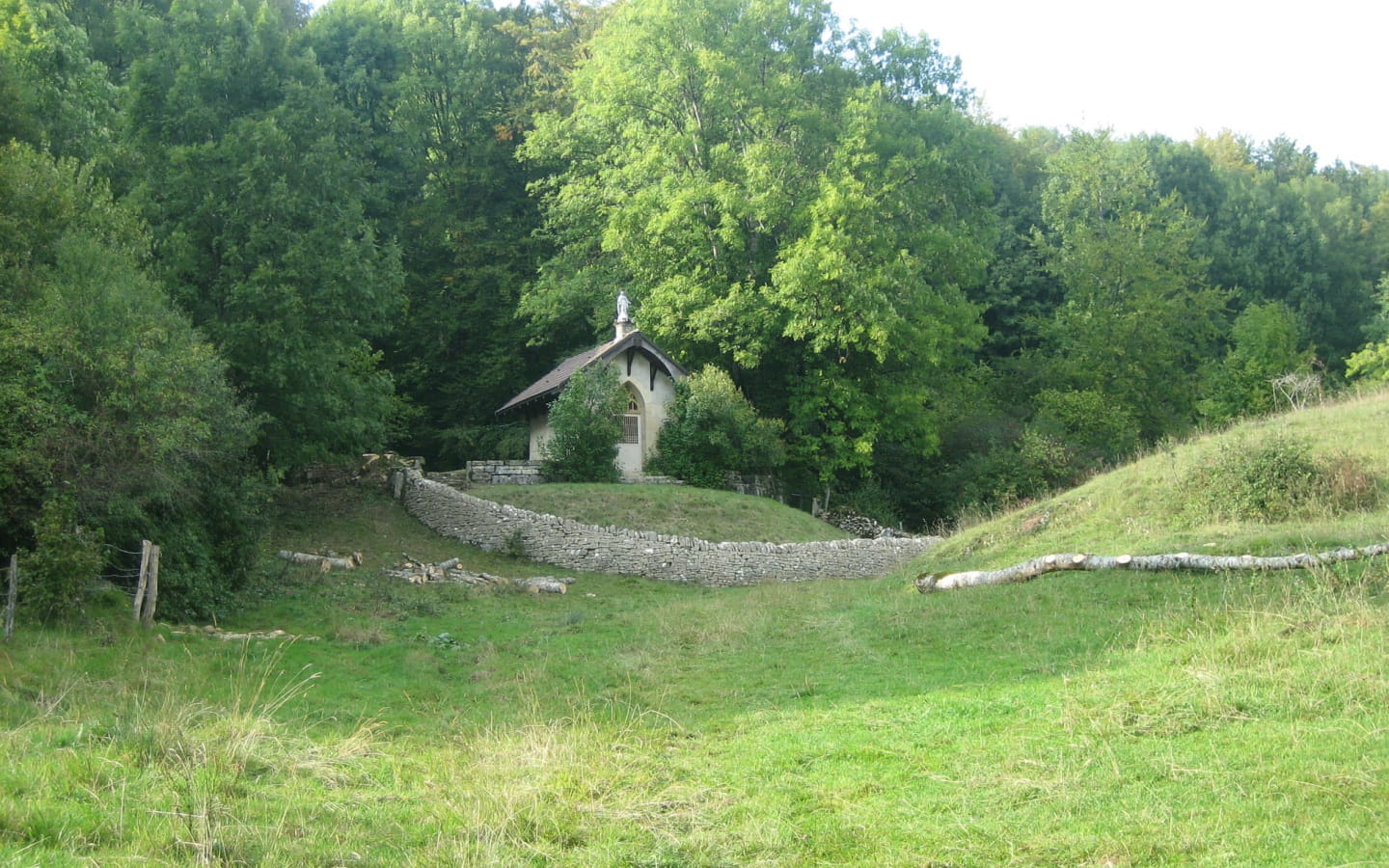
Chapelle Niai-Nion
At the edge of the forest, between Dommartin and Vuillecin, stands a modest chapel. It has a strange name: Niai Nion or according to the map of the region: Gnégnon. From this place the view extends over the Chaux d'Arlier, Pontarlier and the heights of Larmont. Everything is calm, conducive to meditation, but in the distant past this place was the scene of painful events.
Indeed, in 1636, the black plague devastated the region and multiplied the land in the cemeteries known as the Bossus. For fear of contagion, the sick of Dommartin, Houtaud and probably Vuillecin, were led, a few hundred meters from the village, in a narrow valley sheltered by the forest, near a spring. A person from Bannans, Jeanne Laignier, volunteered to be their nurse. Alas! in her turn she was affected by the terrible disease and repeated sadly in dialect: "lai soigni lès autres et niai nion pou m'soigni!" that is to say: "I treated others and I have no one to treat me. Niai nion, I have no one, became the name of the chapel. Jeanne Laignier joined the 120 plague victims who were buried in the cemetery. A stone slab indicates the place of burial. The inscription on it is no longer legible, but at the beginning of the century, it still reads: Jeanne Laignier, died on September 8th 1636. Surprising detail: for more than three centuries, the grass has never covered this slab and the inhabitants of Dommartin-Houtaud consider Jeanne Laignier as a saint. Following these events, the inhabitants of the parish decided to build a chapel dedicated to the Holy Trinity and to place the statues of St. Roch and St. Sebastian, which are invoked against contagious diseases, including the plague. The chapel and the cemetery are surrounded by a dry stone wall and protected by large trees.
From time immemorial, the parishioners of Dommartin go in procession to Niai nion on Trinity Sunday. It is an opportunity for them to meditate on the heroism of Jeanne Laignier who testified by her sacrifice "that there is no greater love than to give one's life for those one loves".
An old text from 1670 informs us that (when) the plague occurred in Dommartin in the year 1636, 120 people died in the parish and were buried in the cemetery of Dommartin Niainion
It was decided to build a chapel in honor of the Holy Trinity, Saint Sebastian and Saint Roch. The materials were all ready and the construction started when in 1639, the village was burned like the town of Pontarlier. It was the Swedes
When the year 1659 was proclaimed, a small oratory was built in honor of the Holy Trinity, St. Sebastian and St. Roch, the small oratory remains in charge of Dommartin as could be seen in the proxy of the masters
This chapel does not leave indifferent the inhabitants of DOMMARTIN HOUTAUD and VUILLECIN, they often come to pray in this solitary place surrounded by the large trees of the forest
On Holy Trinity Sunday, perhaps since 1659, the parish goes there in procession
Sources:
HISTORIES AND TRADITION OF THE DOUBS AND THE LORDSHIP OF DOMMARTIN HOUTAUD AND VUILLECIN (E SAILLARD )
documents and photos TOOPY PROD






